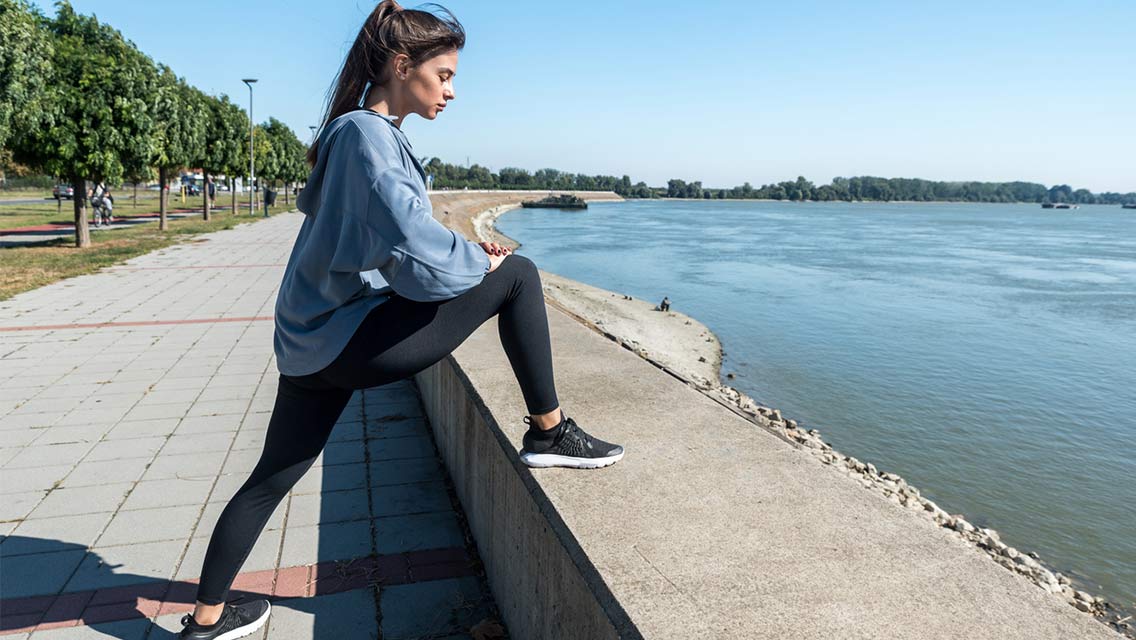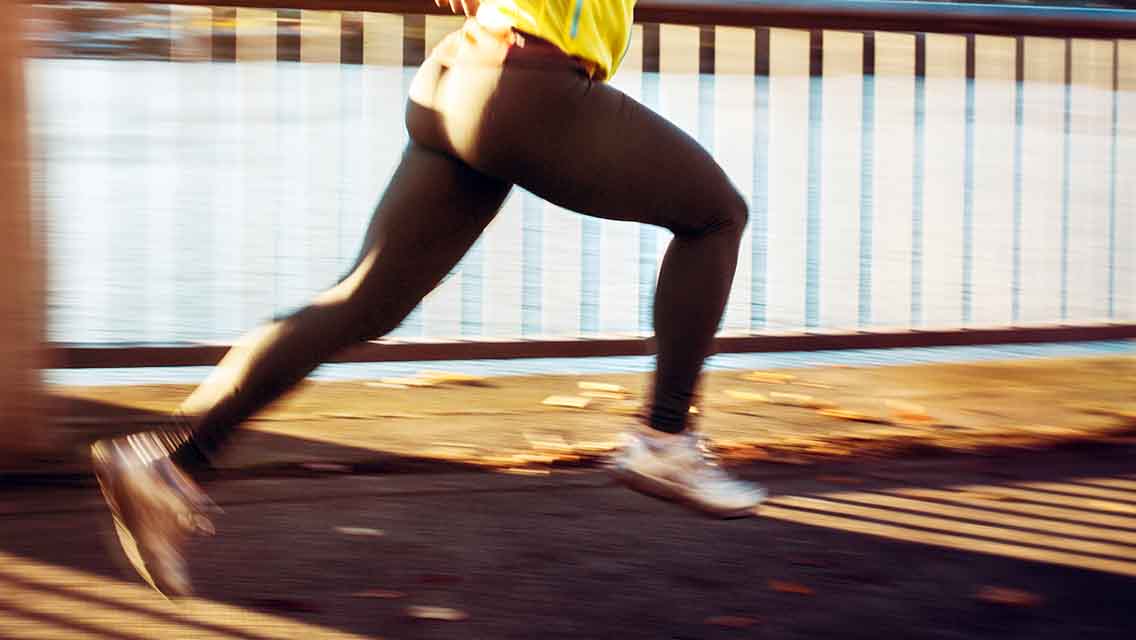If your knees are sore every time you run, or if your hips hurt whenever you climb on a stationary bike, you’re hardly alone. “I would say 30 to 40 percent of my clients come to me having had some form of hip or knee pain during exercise in the past,” says Michael Stare, DPT, CSCS, a physical therapist and strength and conditioning specialist for Spectrum Fitness Consulting in Beverly, Mass.
One of these clients is Jolyne Boyle, 68, a finance manager and grandmother of two from Wyndham, Mass. Boyle sought Stare’s help when her return to vigorous exercise following a 10-year layoff reignited the knee pain she’d suffered during her years of playing tennis – now compounded by arthritis.
Stare steered Boyle away from the speed walks and high-impact group-exercise classes that hurt her knees, and instead had her perform high-intensity cardio intervals on a stationary bike, which she could do without any pain. In addition, he prescribed a resistance-training program that strengthened her whole body – especially the thigh and hip muscles that stabilize the knees.
“I started to get stronger and feel less pain very quickly,” Boyle says. “Now I can do some things I could never do before,” she adds, citing squats as an example.
Boyle is living proof that creaking hips and knees don’t have to stop you from exercising. In fact, the right approach to exercise will not only enable you to work around joint pain, but actually fix it. For example, in a 2005 study published in Arthritis & Rheumatism, Swedish researchers found that moderate exercise strengthened cartilage, reduced pain and improved functional performance in a group of patients at risk for developing osteoarthritis of the knees.
Detouring Past Pain
Working around knee and hip pain in your exercise program is pretty simple.
Rule No. 1 is to avoid trying to push through pain during workouts. “When your body has pain, it’s trying to tell you something,” says Marilyn Moffat, PhD, professor of physical therapy at New York University and coauthor of Age-Defying Fitness: Making the Most of Your Body for the Rest of Your Life. “If you try to push through it, you only make matters worse.”
Rule No. 2 is to switch from the activity that’s causing you pain to an alternative, pain-free one – such as elliptical trainers, aqua aerobics or rowing. “There is always something you can do to maintain your aerobic fitness,” says Moffat. “There are so many activities to choose from. Just find one that meets your needs and rely on it until your condition has improved, and then you can start trying to ease back into your preferred activity.”
Whatever activity you choose, be sure to warm up thoroughly before each session. “The warm-up will help in facilitating not only reduced pain for the exercise that ensues, but will also reduce the risk of further injury,” says Stare. A good warm-up literally warms the muscles, making them more pliable, and releases synovial fluid in the joints, lubricating them and allowing them to move more easily.
The ideal warm-up consists of five to 10 minutes of light cardio activity, plus dynamic stretches, such as walking lunges and arm circles. (For more on warming up, see “Gradual Is Good“.)
Making a Comeback
If you love doing the type of exercise that’s causing you pain, you probably won’t be content to switch permanently to a different activity. Instead, focus on correcting the cause of your joint pain, which will reduce the chance of its returning when you resume your preferred exercise.
Aside from simply doing too much too soon, the two major factors that contribute to exercise-related joint injuries are structure (alignment, flexibility and strength) and mechanics (how you move), according to Irene Davis, PhD, PT, professor of physical therapy at the University of Delaware and director of the University of Delaware Running Injury Clinic.
The most common structural problem causing pain in the hips and knees is weakness in the muscles that stabilize these joints. “The muscles around your knees and hips normally do a good job of attenuating shock and force,” says Robert Manske, PT, CSCS, a physical-therapy instructor at Wichita State University. “The stronger these muscles are, the more you can limit abnormal joint movement and the less stress you’ll place upon them.”
There are many effective ways to strengthen your hip and knee stabilizers, including calisthenics, stability-ball training, weightlifting, Pilates and yoga. Strength training may also help correct any technique-related errors that contribute to your joint soreness, such as the “knock-kneed” running motion that stems from weak hip stabilizers and often causes knee pain.
Fully correcting technique flaws, however, can take conscientious movement retraining, which usually requires the help of an experienced physical therapist or personal trainer.
“There are many possible technique-related causes of injuries,” says Davis. “The average exerciser doesn’t have the expertise to be certain of finding the true cause without help.” Indeed, when exercisers try on their own to alter their technique in response to joint pain, they often wind up inadvertently creating a “compensatory” injury somewhere else in the body, she says.
If joint pain appears in your workout, resist giving in to the initial temptation to give up exercise entirely. Instead, try cross-training activities you can perform without pain until you can correct the structural issues or techniques that are causing it. Your health and well-being depend on exercising consistently, and if you have the will, you can find a way to stay fit – despite creaky joints.
Joint Health Resources
Improving and maintaining the health of your joints requires a holistic approach. Exercise is only one element.
- A healthy diet designed to minimize inflammation will also help (see “Fighting Inflammation“), and you may get an additional boost from a glucosamine-chondroitin supplement, which is proven to reduce arthritis pain.
- Learning to use your body properly in everyday activities is a great way to build on the foundation provided by exercise (see “How to Run Mindfully” and “How to Lift Weights Mindfully“).
- And various forms of bodywork, such as chiropractic and Rolfing, can relieve joint pain in some individuals.
This article originally appeared as “Joint Effort” in the October 2007 issue of Experience Life.



This Post Has 0 Comments